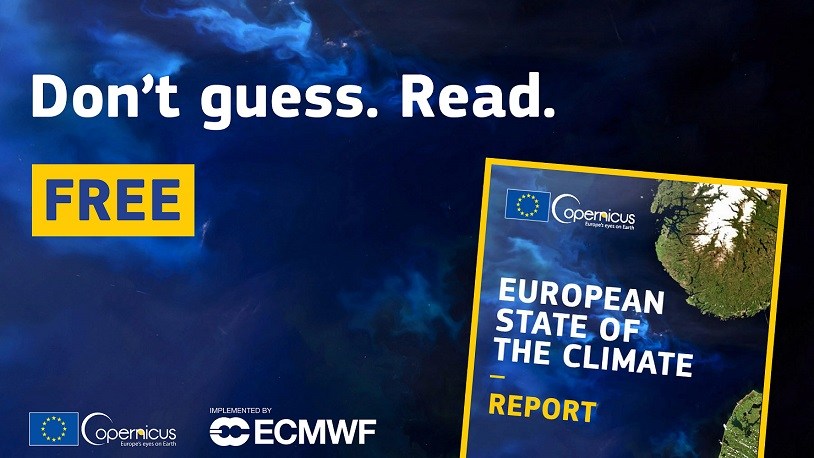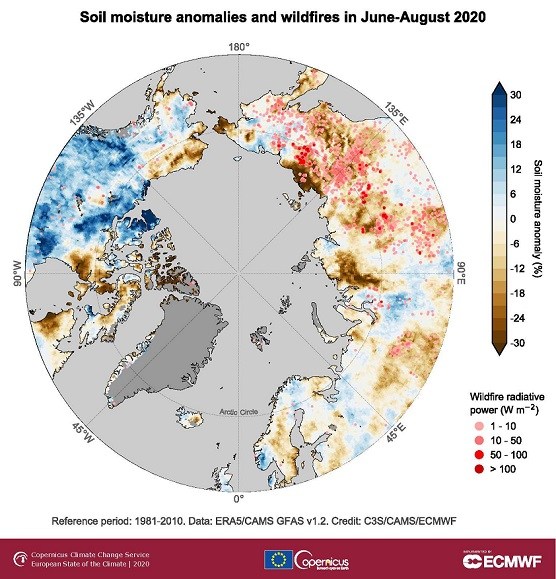The European Union’s Copernicus Climate Change Service (C3S) has just published its European State of the Climate 2020 report, confirming that 2020 was Europe’s warmest year, while worldwide it was one of three hottest years on record. The data collected and analysed in the report highlights the urgency of tackling climate change.
Climate change is undoubtedly a concerning issue for us all and top of most governments’ agendas as it becomes clear that mitigating its effects is an increasing challenge. Warning signs such as rising sea levels, loss of ice mass and a heightened chance of extreme weather events are already upon us. The next 30 to 50 years are crucial in counteracting the warming trend and reducing anthropogenic emissions.
A new climate change adaptation strategy for Europe released this year by the European Commission states the urgency of acting now with a key aim to ‘get ready today to build a climate-resilient tomorrow.’ As climate change affects not only the economy but the health and well-being of all Europeans, the Commission urges that climate adaptation must involve all sections of society and all levels of governance, both in and outside the European Union.
But how can any of us make decisions on how to adapt to climate change and mitigate its effects without access to the right information? This information needs to be reliable and trustworthy, but also consistent and timely, considering the long-term picture.
The European State of the Climate 2020 (ESOTC), a report just published by the Copernicus Climate Change Service (C3S), is an in-depth overview of the year’s climate in the context of the longer-term. C3S publishes the report every April. The service consistently monitors, collects and processes a huge amount of climate data. It specialises in making the raw data accessible and understandable - alongside supporting products and tools - to a broad range of users and the report is just one of the ways it achieves this. By comparing the year against a reference period spanning several decades to give the longer-term context, the report is an essential tool in aiding decision-makers by providing a benchmark for future assessments of the environment.
The results of the ESOTC speak for themselves as they reveal that 2020 was the warmest year, autumn and winter on record for Europe, while globally it was one of three warmest years ever recorded. The sensitive region of the Arctic saw its second warmest year on record. Meanwhile, concentrations of greenhouse gases continued to rise; in fact, these were the highest concentrations measured by satellites since space-based observations began in 2003.
The ESOTC is compiled by scientists at the Copernicus Climate Change Service (C3S) in collaboration with partner organisations and highly regarded climate institutions. The report compares the year against a reference period of 30 years to create one of the most detailed overviews of climate trends. The scientists achieve this by using a recognised method called reanalysis, which combines measurements from satellites and ‘in-situ’ stations on land, in the air and at sea, with computer modelling to recreate historical climate conditions. This reconstruction of past climate helps to understand how unusual a particular weather event is and if it fits with climate change trends or is just a result of natural climate variability.
[brid autoplay="true" video="759893" player="26721" title="2021.04.12%20%20ECMWF%20%20ESOTC2020%20topic%20Arctic%20v5n" duration="20" description="" uploaddate="2021-04-21 08:16:31" thumbnailurl="https://cdn.brid.tv/live/partners/19009/thumb/759893_t_1618993004.png" contentUrl="https://cdn.brid.tv/live/partners/19009/sd/759893.mp4"]
The ESOTC includes a short overview of the global context in 2020 and a more comprehensive examination of conditions in Europe and a focus on the Arctic. It explores key climate variables including ice loss, lake surface temperatures, wildfire activity and vegetation cover. The report provides a detailed analysis of the past calendar year with descriptions of climate conditions and events, exploring the associated variations in key climate variables from all parts of the Earth system. Alongside this, the report gives updates on the long-term trends of key climate indicators to help provide context.
Freja Vamborg, Senior Scientist at the Copernicus Climate Change Service (C3S) and Lead Author of the European State of the Climate 2020 (ESOTC), comments:
“Our findings highlight the continued warming trend, not just in Europe, but across the globe.”
“C3S, which is part of six thematic services of the European Commission’s Earth Monitoring Programme Copernicus, translates raw data into useful climate information which is accessible to a broad audience. The ESOTC report is the result of our monitoring of the climate and a successful collaboration between C3S and many different institutions across Europe to provide a unique insight into the status of our planet.”
The long-term vision is that the European Union will become a ‘climate-resilient’ society, fully adapted to the unavoidable impacts of climate change. The EC’s aim is to improve knowledge and data, support policy development and climate risk management at all levels and accelerated adaptation across the board. And it is only by being armed with appropriate and timely information such as the European State of the Climate 2020 report that we can all work towards this climate adaptation process and tackle climate change together.
About ECMWF and Copernicus
Copernicus is the European Union’s flagship Earth observation which operates through six thematic services: Atmosphere, Marine, Land, Climate Change, Security and Emergency. It delivers freely accessible operational data and services providing users with reliable and up-to-date information related to our planet and its environment. The Programme is coordinated and managed by the European Commission and implemented in partnership with the Member States, the European Space Agency (ESA), the European Organisation for the Exploitation of Meteorological Satellites (EUMETSAT), the European Centre for Medium-Range Weather Forecasts (ECMWF), EU Agencies and Mercator Océan, amongst others.
ECMWF operates two services from the EU’s Copernicus Earth observation programme: the Copernicus Climate Change Service (C3S) and the Copernicus Atmosphere Monitoring Service (CAMS). They also contribute to the Copernicus Emergency Management Service (CEMS). The European Centre for Medium-Range Weather Forecasts (ECMWF) is an independent intergovernmental organisation supported by 34 states. It is both a research institute and a 24/7 operational service, producing and disseminating numerical weather predictions to its Member States. This data is fully available to the national meteorological services in the Member States. The supercomputer facility (and associated data archive) at ECMWF is one of the largest of its type in Europe and Member States can use 25% of its capacity for their own purposes.
ECMWF is expanding its location across its Member States for some activities. In addition to an HQ in the UK and Computing Centre in Italy, new offices with a focus on activities conducted in partnership with the EU, such as Copernicus, will be located in Bonn, Germany from Summer 2021.
Visit the Copernicus Climate Change Service website
Visit the Copernicus Atmosphere Monitoring Service website
More information on the Copernicus website or the ECMWF website.
Twitter:



